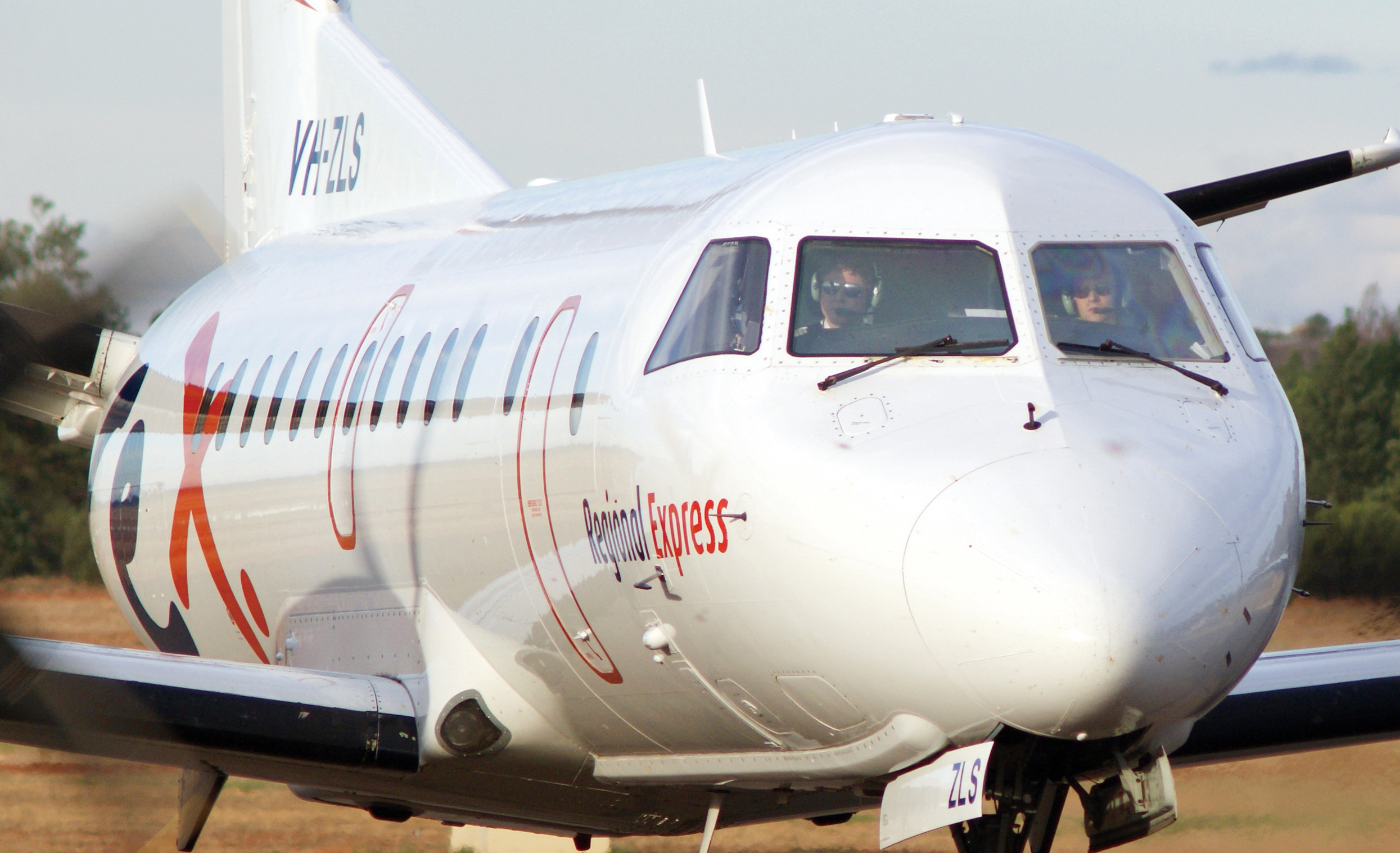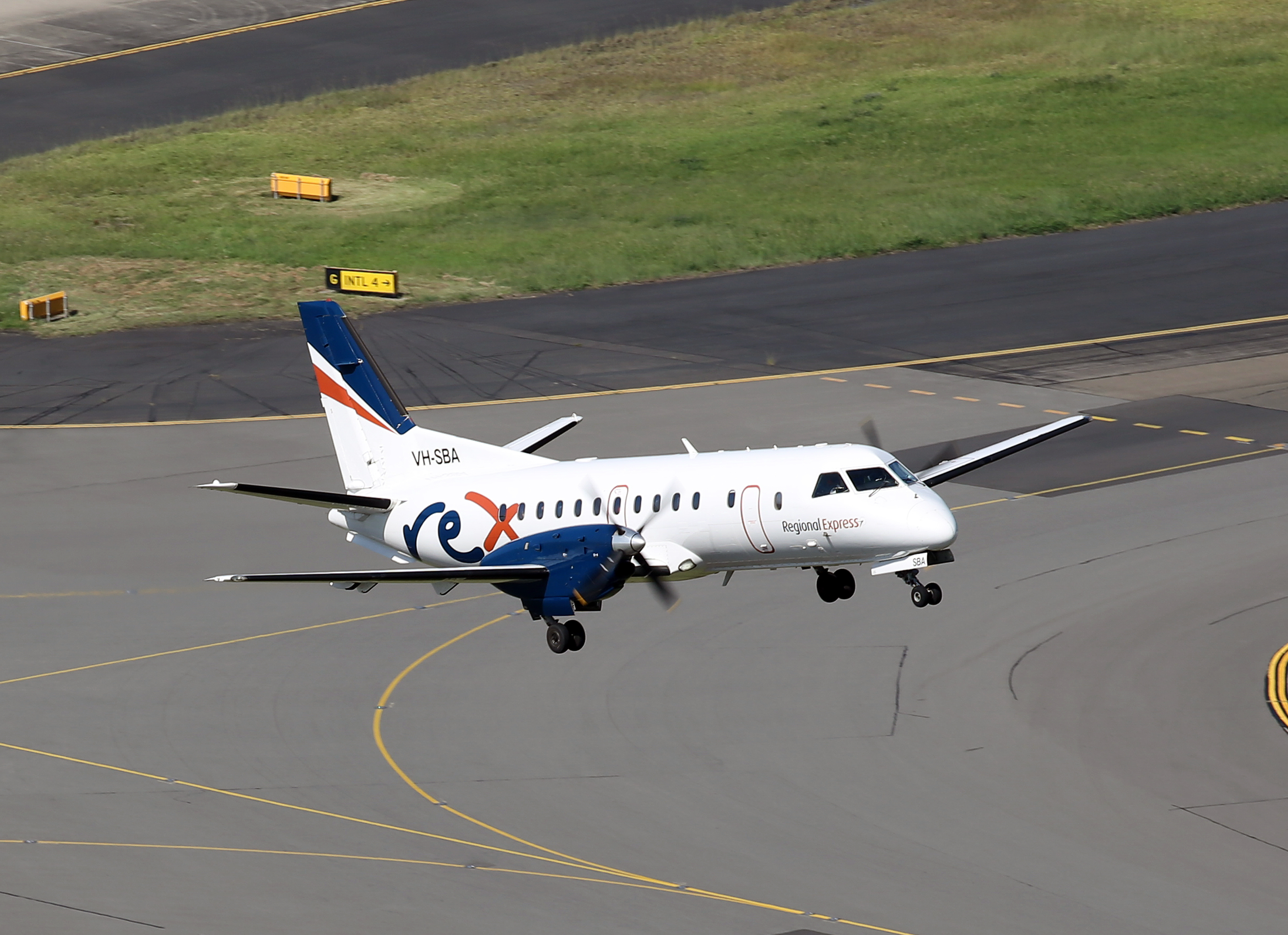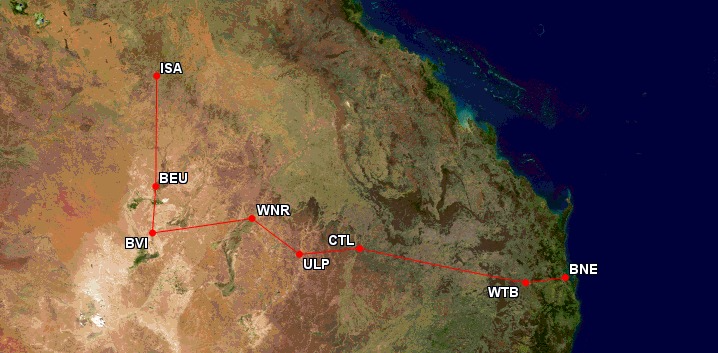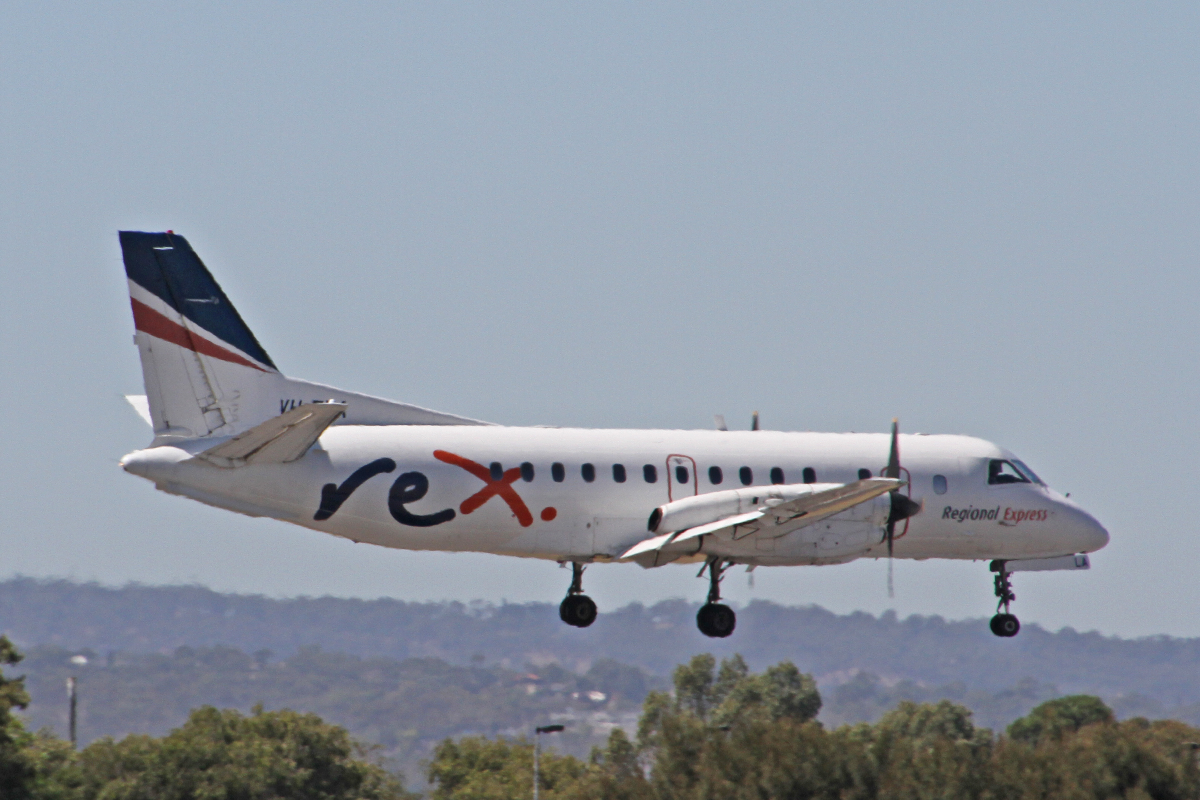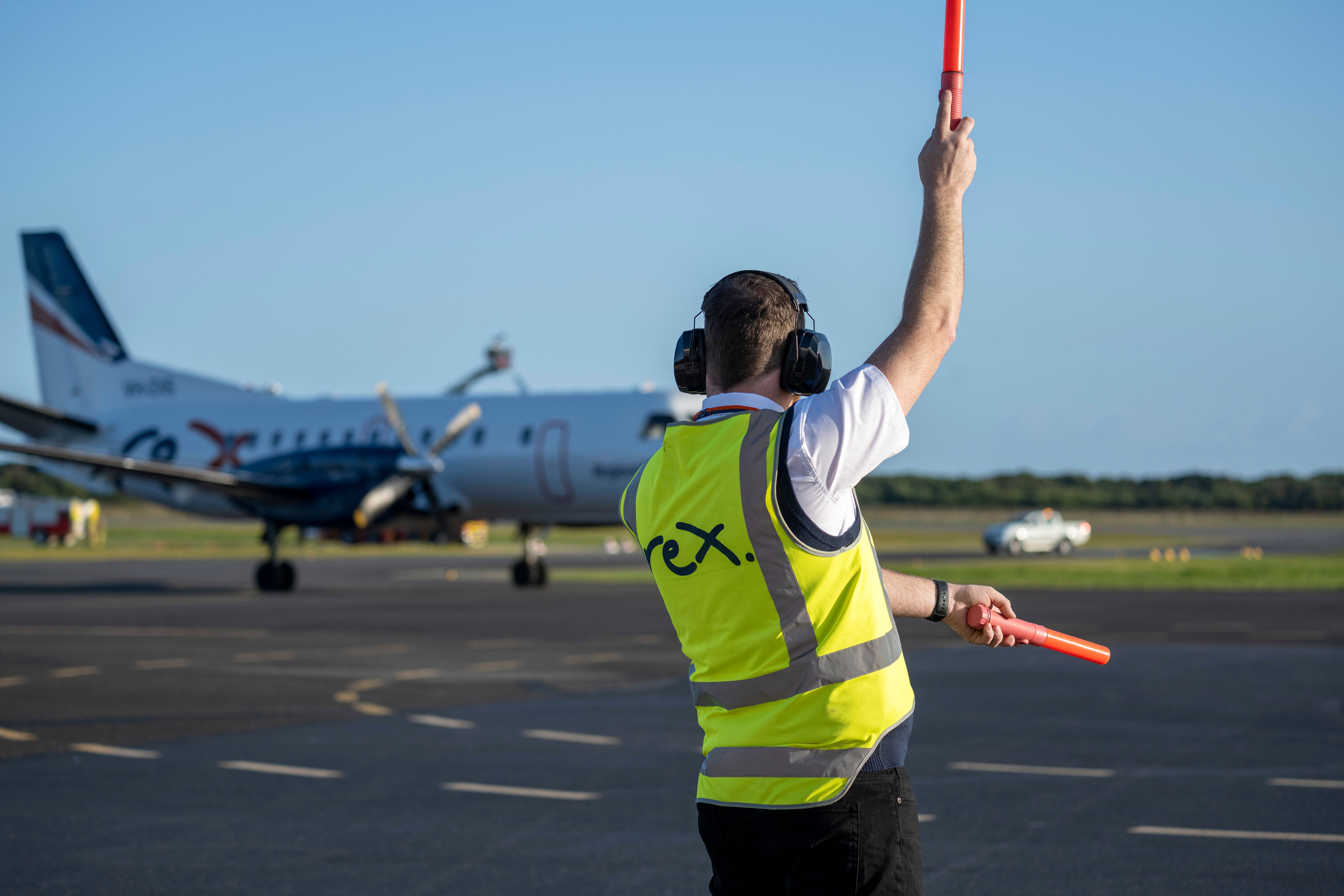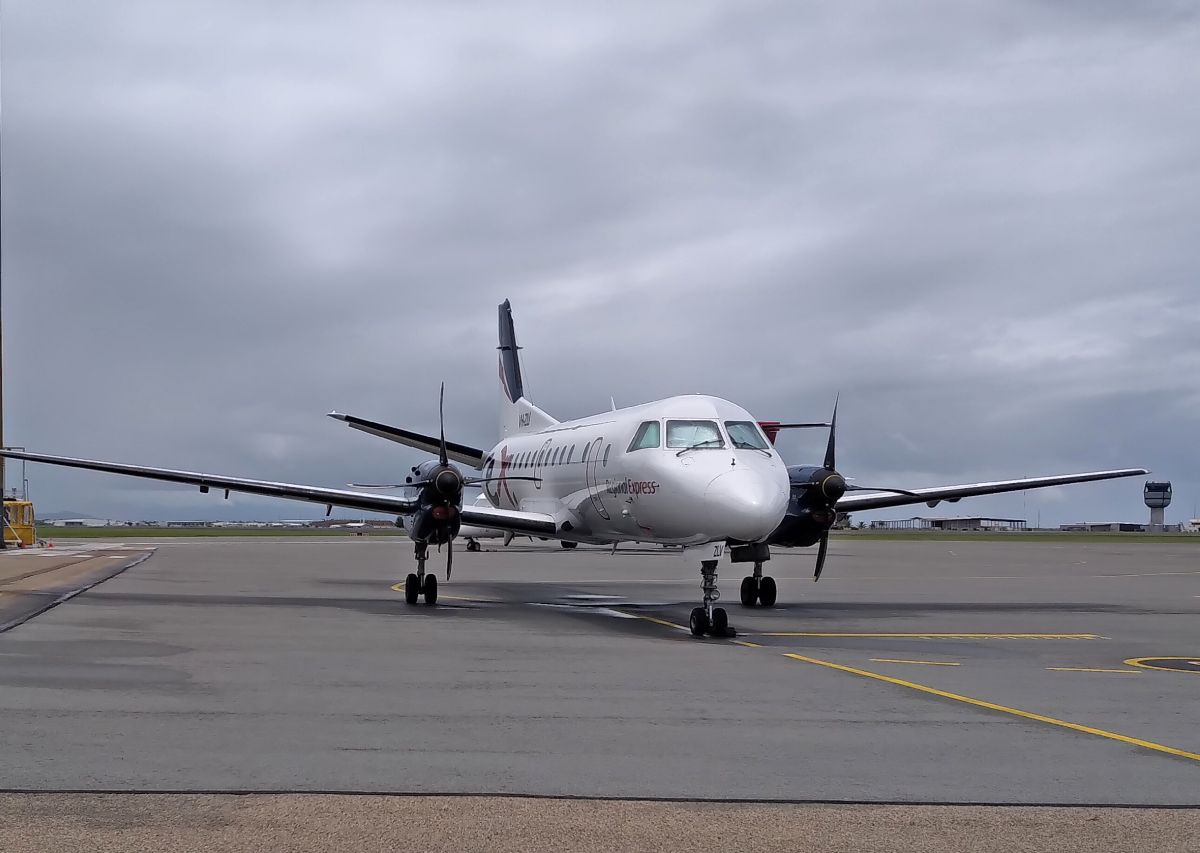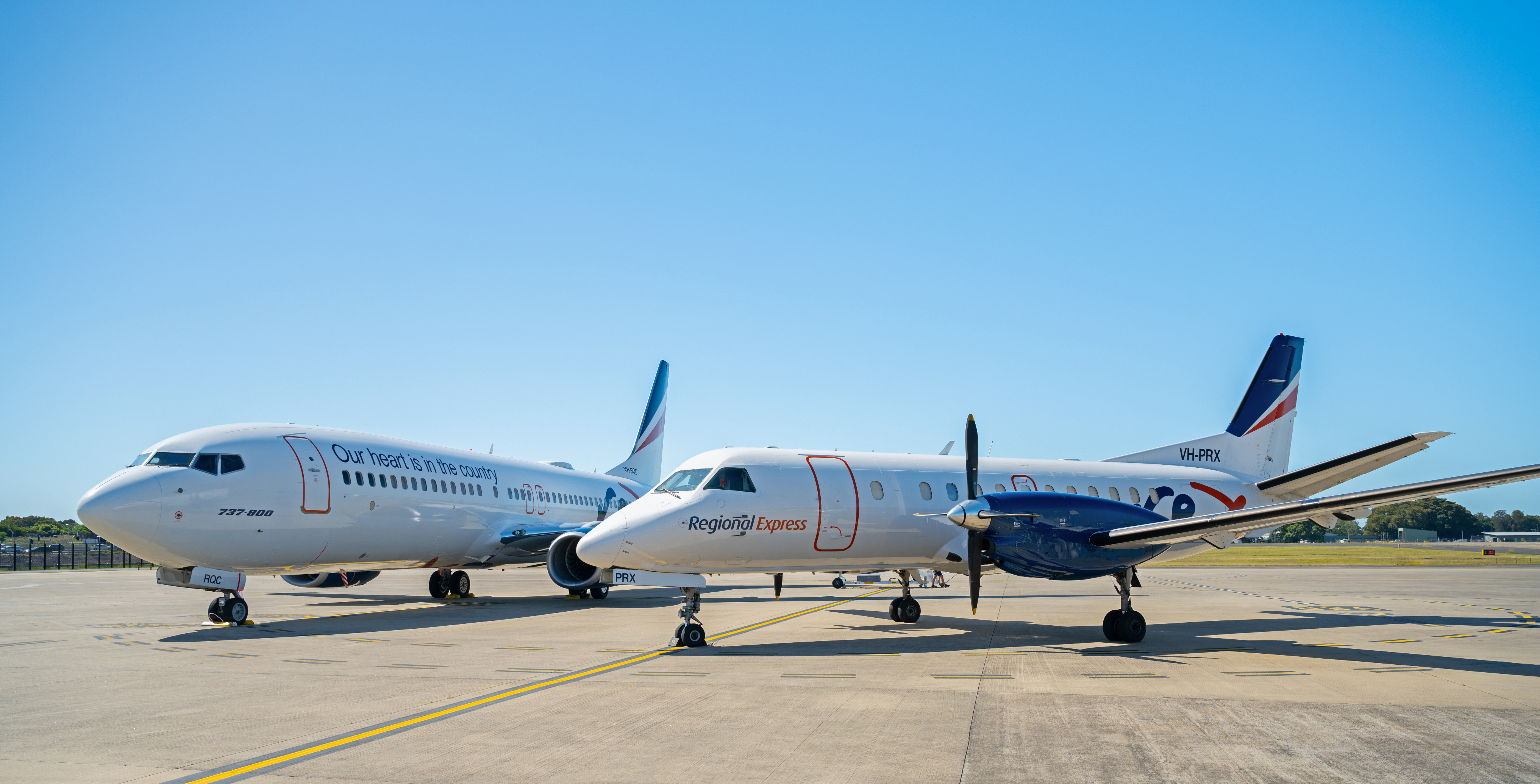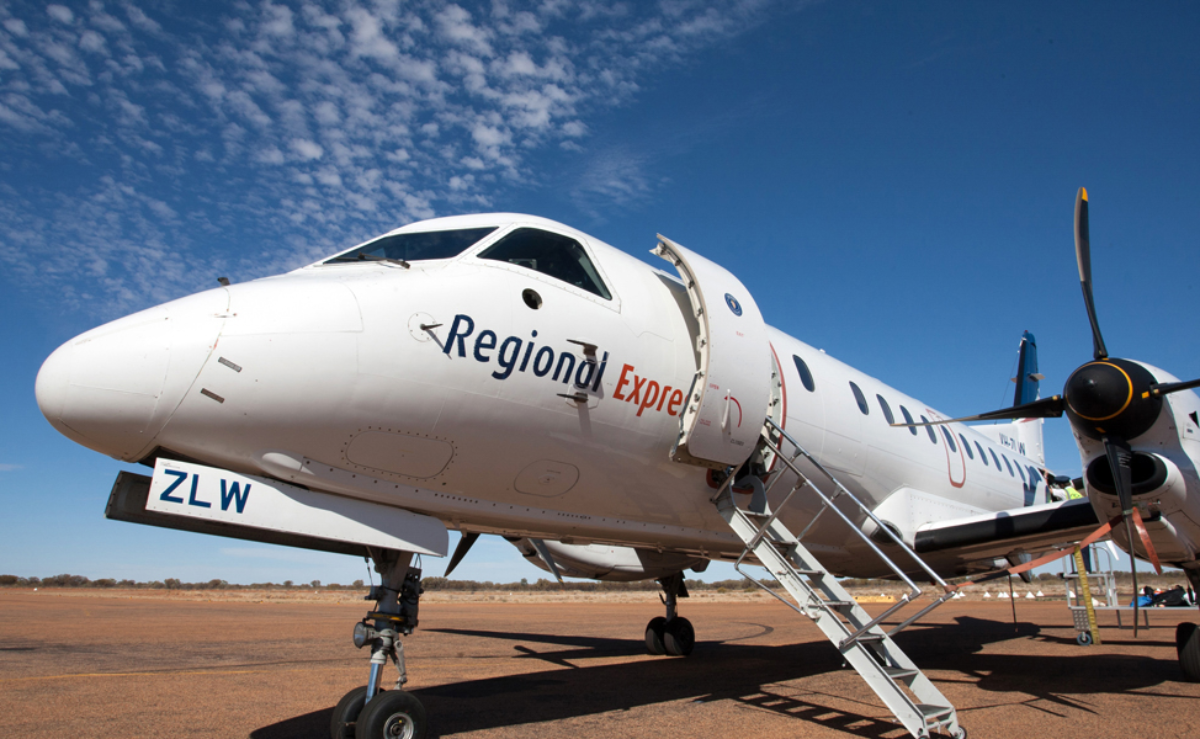Regional airline operations often involve flying smaller turboprop aircraft on shorter routes, serving remote communities which rely on air connectivity to survive. There is, however, one route in Queensland, Australia, that takes this model to a whole new level. Let's take a closer look at the Regional Express Airlines (known as 'Rex') operation from Brisbane to Mount Isa.
A unique flying experience
For the average traveler, the thought of spending the best part of a day flying on a noisy 30-seat turboprop aircraft that makes six intermediate stops before it finally delivers you to your final destination must sound like nothing short of a never-ending bad dream. However, for others, the opportunity to undertake such an adventure holds a certain allure on a route unlike any other.
Operated by Rex Airlines, the Queensland 'milk-run' flight operates between Brisbane, the state capital of Queensland, and the remote township of Mount Isa, best known for its local industry involved in the extraction of natural resources.
The operation is a feat of endurance for both the aircraft used and its crew, taking passengers from the urban sprawl of Brisbane, through several small farming communities, before arriving at the remotely located town in Northern Queensland.
Rex operates this vital service twice weekly in each direction, using one of its fleet of 60 Saab 340 turboprop aircraft, which seat between 30 and 36 passengers depending on the configuration. The flights are bookable via the Rex website, and fares start at just AUD$299. Flight numbers are ZL7662 westbound from Brisbane, and the return flight is ZL7661 from Mount Isa.
The total flight takes just over 9 hours and makes six intermediate stops at various points on its journey. The actual direct distance between Brisbane and Mount Isa, according to gcmap.com, is just 977 statute miles (1,563 kilometers). However, with its various stopovers and diversions of the direct route, the total distance covered by the milk run is actually 1,256 miles (2,905km), with an average sector length of 179 miles (186 km).
Subsidization remains key to the operation
As is often the case with marginal regional routes (both in Australia and elsewhere), the Rex milk run operation would not be commercially viable without vital subsidies by the Queensland State government. Without such subsidies, many regional routes within Australia would simply close, and many remote communities would be left without the vital air services they rely on for much-needed links to healthcare and other essential services.
Operations such as the Rex milk run also offer the local residents the opportunity to move between the various communities for social reasons and to travel to promote local commerce.
Route details of the 'milk run'
Setting off from Brisbane's main international airport (BNE), flight ZL7661 departs in the morning at 08:00, heading west on the first sector of its seven-sector day. The first stop is just a short hop from Brisbane. Toowoomba Wellcamp Airport (WTB) is just 25 minutes flying time from Brisbane, or 82 miles (131 km) in distance.
Toowoomba Wellcamp Airport is Australia's newest privately run and constructed airport and opened to commercial traffic in 2014. Despite the distance from Brisbane, when it first opened, the airport referred to itself as Brisbane West Airport (this name was later dropped in 2017).
The airport sees regular service from Qantaslink (Sydney), Airnorth (Melbourne, Townsville, and Cairns), and Rex. The airport, with its substantial single runway (12/30) with a length of 9,420ft (2,870m), also accommodates regular flights from Cathay Pacific Cargo and Singapore Airlines Cargo flights. It also handles diverted flights as the primary alternate airport for Brisbane.
Departing Toowoomba Wellcamp at 09:00, the next leg of the journey takes passengers 350 miles (560km) to Charleville Airport (CTL) with a flight time of 1 hour 40 minutes. While on the ground at Charleville, passengers can disembark the aircraft for a 30-minute comfort break while the plane is prepared for the next leg, and the crew enjoys a well-earned coffee break!
Once the aircraft is ready for its third leg of the day, it takes off at 11:00 on its next 125-mile (200km) sector to Quilpie (ULP), arriving at 11:45. Quilpie is a small rural outback town that boasted a population of just 595 people (according to the last local census in 2016).
Due to the lack of ground power at Quilpie, the flight crew keeps the right-hand (starboard) engine running for the brief stopover (known as a 'hot turnaround'). The aircraft is soon on its way again at 12:05, heading to Windorah (WNR), an even smaller town (population of 115 in 2016), a distance of 129 miles (206km). The flight lands at this next stop at 12:50.
Once on the ground in Windorah, the aircraft is refueled, and the crew takes a break for lunch. Passengers traveling onwards with the plane in the afternoon are asked to disembark for another short break before they reboard. Once ready to go, the engines are started again for the second half of this epic trip across the outback.
The second half
The afternoon's flying sets off from the town of Windorah at 13:00, landing an hour later in the town of Birdsville (BVI), a distance of 210 miles (336km). By now, the lush agricultural landscape has disappeared, and the flight is passing over a largely featureless red earth desert, colloquially known as Australia's 'red center.' Birdsville is another tiny town with a population of just over 100 people as of 2021.
After another 45 minutes on the ground in Birdsville, the plane sets off for the sixth and penultimate sector of the milk run at 14:45, heading 107 miles (171km) for the equally tiny town of Bedourie (BEU), landing at 15:25. With a final brief stop to load and unload passengers, baggage and freight, the aircraft sets off for the last leg of the day, heading to the industrial mining town of Mount Isa, Queensland.
This last leg departs Bedourie at 15:40 for the second-longest sector of the day (1 hour and 35 minutes), landing 253 miles (404km) away at the final destination of Mount Isa (ISA) at 17:15. Mount Isa Airports plays host to scheduled flights to Cairns, Townsville, and the regional destinations included on the Rex milk run. The airport has a single asphalt runway (16/34) measuring 8,399ft (2.560 m) in length.
Flight ZL7662 ends its journey here, where the aircraft is shut down, closed up, and the crew heads into town for a night stop before returning to fly back to Brisbane the following morning as ZL7661.
All the way home back to Brisbane
The journey back to Brisbane leaves Mount Isa at 08:00 and, following the same route as the westbound ZL7662 the previous day, lands back at Brisbane at 17:15, taking 9 hours and 15 minutes to complete the return leg.
The total time for the round trip sees the assigned aircraft operating for 18 hours 30 minutes over the return journey between Brisbane to Mount Isa and away from its Brisbane base for a total of 33 hours and 15 minutes.
A trip like no other
For an individual needing to travel from Brisbane to Mount Isa (or vice versa), there are numerous other options for flying between the two points which are far quicker and arguably in far more comfortable surroundings than that offered by Rex's Saab 340 aircraft. Other airlines (Virgin Australia, Qantas) provide direct services operated by more comfortable, larger, and much faster Boeing 717-200s and 737-800s
That said, traveling on this unique route offers travelers an insight into small-town, regional airline operations - opportunities that are becoming increasingly hard to find.
For a reasonable fare and at a pace that will allow you to see and enjoy some of the most stunning landscapes on the planet passing beneath you, surely the Rex Queensland milk run should feature highly on the list of must-dos for all those who either love flying, have an interest in rural airline operations, or just love the thought of traveling across vast swathes of the Australian outback in such a leisurely and scenic way.
Have you ever flown on Rex or been fortunate enough to travel on the airline's Queensland milk run operation? If so, do let us know about your experience in the comments.
Source: Rex Airlines, gcmap.com

